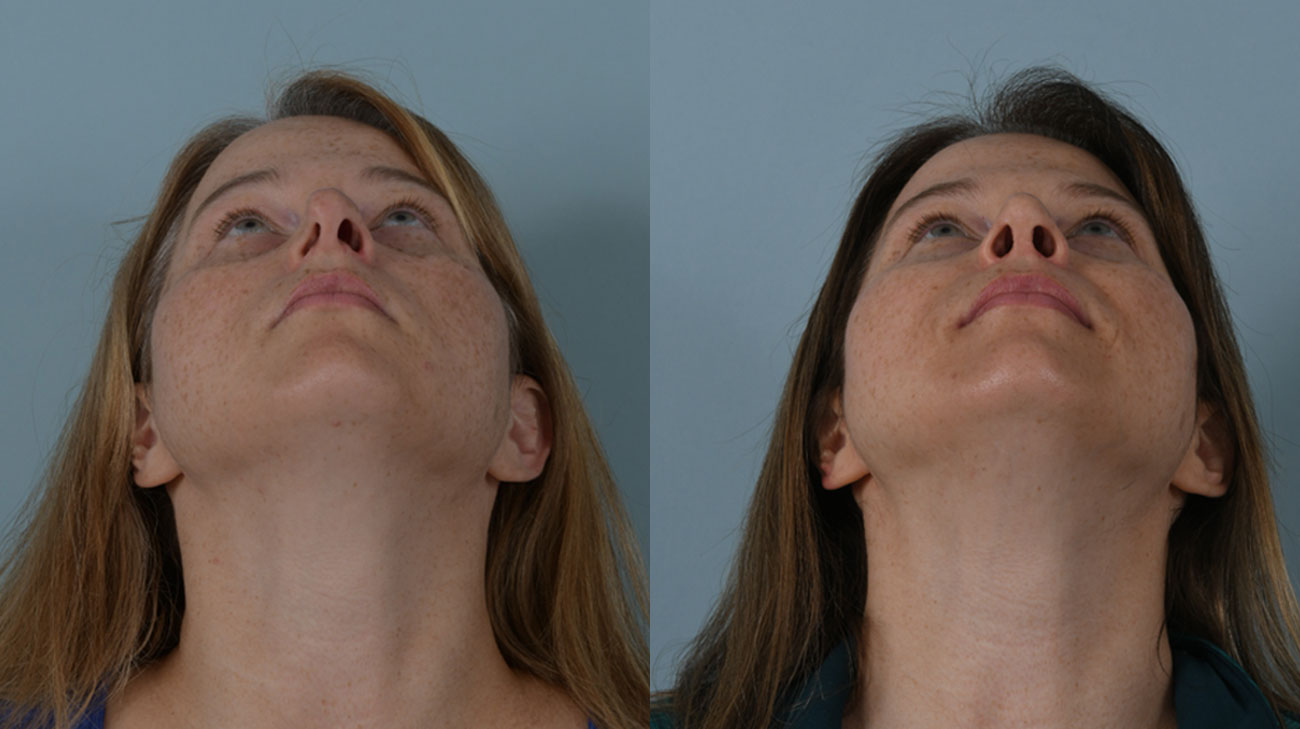
Nasal blockage doesn’t always start with trauma or visible swelling. Breathing difficulty often becomes noticeable when lying down or during physical activity. This discomfort may seem minor at first, like reduced airflow in one nostril. Over time, the blockage becomes more persistent and noticeable. People often think it’s due to allergies or congestion. But if one side of the nose always feels tighter, structure may be the issue. Deviated septum is a common cause, yet it goes undiagnosed in many cases. The symptoms tend to worsen slowly and are easy to overlook during daily routines.
Chronic mouth breathing can lead to throat dryness and disturbed sleep patterns
If nasal breathing is restricted, the body adapts. Chronic mouth breathing can lead to throat dryness and disturbed sleep patterns. Many people wake up feeling parched, even after a full night’s sleep. Snoring may also begin without any weight gain or other changes. These disruptions often go unexplained unless directly linked to nasal obstruction. Over time, lack of deep sleep affects memory, mood, and concentration. The blocked airflow forces the mouth open during rest, which leads to poor sleep hygiene. A deviated septum or internal swelling may contribute more than previously realized.
One-sided nasal blockage that doesn’t change with weather or allergies suggests a structural problem
Seasonal allergies and colds can cause temporary nasal congestion. One-sided nasal blockage that doesn’t change with weather or allergies suggests a structural problem. Deviated septum is often responsible for this persistent obstruction. It can form from injury or appear without known cause. Sometimes the bone and cartilage twist just enough to interfere with airflow. Nasal sprays or antihistamines provide only partial relief in these cases. Persistent imbalance between nostrils often goes unnoticed until airflow becomes limited enough to impact daily breathing. Simple observation over weeks may reveal the difference.
Frequent sinus infections may result from poor drainage due to anatomical narrowing
Nasal blockages don’t just affect airflow. Frequent sinus infections may result from poor drainage due to anatomical narrowing. Mucus gets trapped, leading to bacterial growth and repeated inflammation. People experience facial pressure, headaches, and nasal discharge. Antibiotics help short-term, but symptoms often return. Structural issues like a deviated septum prevent proper ventilation in sinus cavities. Even with allergy management, infection risk remains high. Imaging often reveals the blocked pathways that standard exams might miss. Chronic sinus problems may be more about structure than infection alone.
Decongestant sprays can stop working when used too frequently for temporary relief
Some people rely on nasal sprays for quick breathing relief. Decongestant sprays can stop working when used too frequently for temporary relief. The nose becomes dependent, requiring more frequent use for less benefit. Overuse causes rebound swelling that feels worse than the original issue. Eventually, airflow worsens and nasal passages become inflamed. Structural blockages don’t respond well to chemical decongestion. People mistake temporary relief for a lasting solution, delaying diagnosis. Long-term reliance on sprays can mask underlying problems that need surgical evaluation.
If airflow is always better on one side, septal deviation could be the cause
Most people breathe easier through one side of the nose. If airflow is always better on one side, septal deviation could be the cause. This uneven airflow persists across seasons and unrelated to colds. The nasal cycle normally shifts airflow every few hours. But a significant deviation disrupts this balance permanently. The blockage remains constant even when inflammation goes down. Over time, the restricted side may cause more sinus symptoms or voice changes. A simple mirror test can show which nostril performs poorly during normal breathing.
Snoring that develops without other risk factors may begin with nasal resistance
Snoring doesn’t always come from the throat. Snoring that develops without other risk factors may begin with nasal resistance. A blocked nose increases pressure during sleep, pulling soft tissues inward. Even slim, healthy individuals can snore due to restricted airflow. This may also lead to daytime fatigue or early morning headaches. Septoplasty reduces nasal resistance, improving airflow and reducing vibration. Addressing nasal obstruction early may prevent sleep apnea progression later. Nighttime symptoms often improve within days after successful surgery.
Septoplasty reshapes the septum to open airflow without changing the outer nose
Surgery becomes an option when symptoms persist despite other treatments. Septoplasty reshapes the septum to open airflow without changing the outer nose. It’s done under anesthesia through the nostrils, leaving no external scars. The surgeon removes or repositions the deviated cartilage and bone. Recovery usually takes about a week, with mild swelling and congestion. Most people return to normal activities quickly. The goal is to restore internal symmetry, not alter appearance. Results are long-lasting for those with true anatomical deviation.
Imaging helps determine whether the septum alone is blocking nasal airflow
Before surgery, doctors need a clear picture. Imaging helps determine whether the septum alone is blocking nasal airflow. CT scans or endoscopic exams reveal internal structures in more detail than external checks. This step also checks for nasal polyps or chronic inflammation. Sometimes, multiple issues overlap and contribute to the blockage. Visual confirmation helps create a precise surgical plan. Accurate diagnosis is critical for successful septoplasty outcomes. Without imaging, subtle issues may be overlooked.
Combining septoplasty with turbinate reduction can improve breathing even more
In many cases, the septum isn’t the only factor. Combining septoplasty with turbinate reduction can improve breathing even more. Turbinates are soft tissues that warm and humidify air. When enlarged, they can block the airway even without septal deviation. Reducing their size makes room for airflow without removing them completely. The procedures are often done together to address both causes of obstruction. Healing time is similar for combined surgeries. Better breathing outcomes follow when both issues are treated.
Post-surgery care includes saline rinses, rest, and avoiding blowing the nose
Recovery doesn’t end in the operating room. Post-surgery care includes saline rinses, rest, and avoiding blowing the nose. Crusting and dryness may occur in the first days. Gentle rinsing helps remove debris and reduce swelling. Sleeping upright prevents pressure buildup and promotes drainage. Activity should be limited to prevent bleeding or pain. Most symptoms ease within a week, though healing continues longer internally. Follow-up visits monitor progress and check for complications. Adhering to care instructions ensures the best possible outcome.
Septoplasty may offer long-term relief when nasal blockage resists medical treatment
Not everyone needs surgery right away. Septoplasty may offer long-term relief when nasal blockage resists medical treatment. It’s recommended only when structural issues are confirmed and symptoms affect daily life. The procedure isn’t cosmetic, and the decision is based on breathing function. Those who’ve tried sprays, allergy care, and therapy without results may consider surgical options. A clear diagnosis, realistic expectations, and proper timing all matter. When chosen carefully, septoplasty can make breathing feel normal again.
Source: Otolaryngology in Dubai / Otolaryngology in Abu Dhabi
